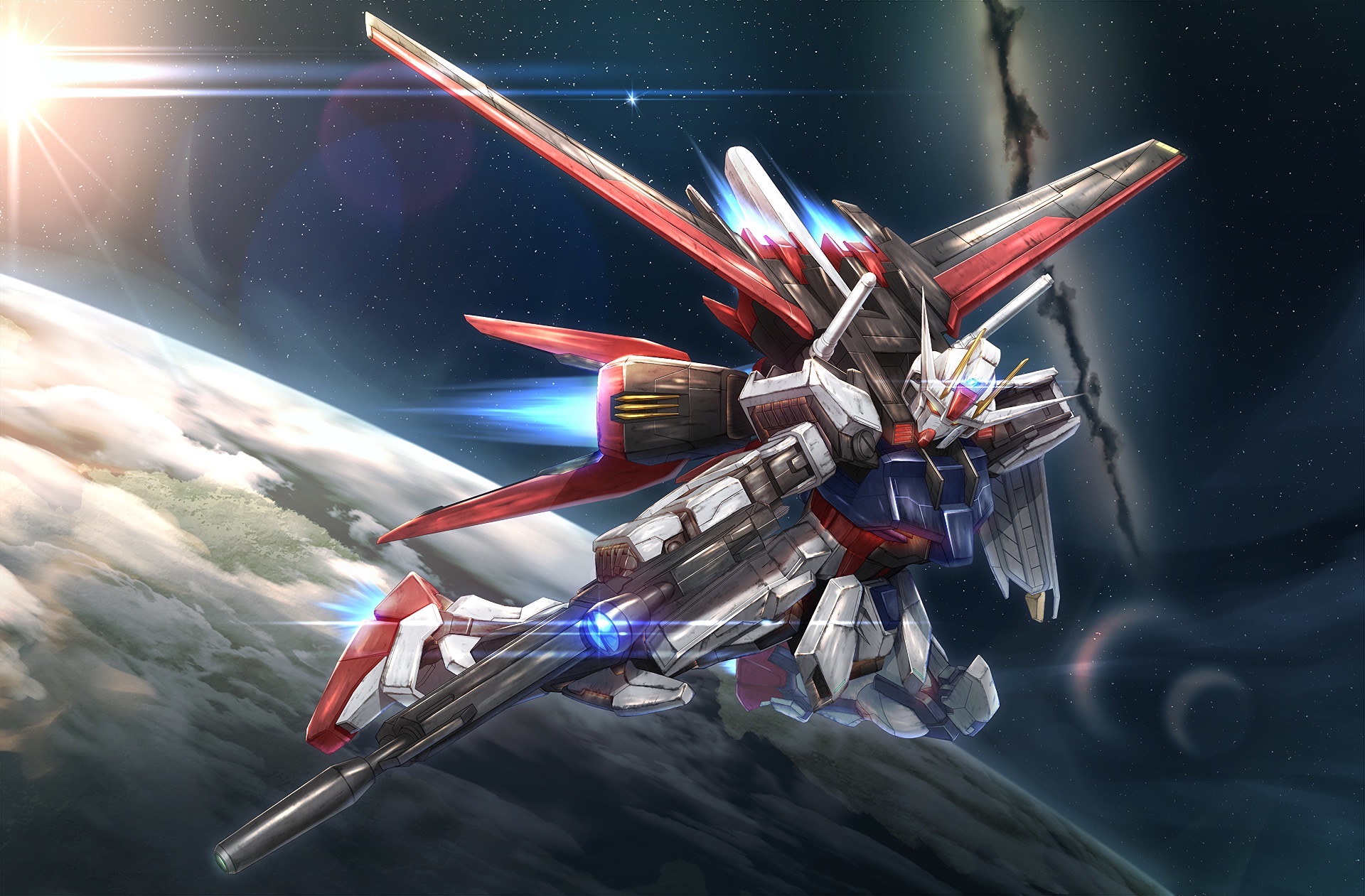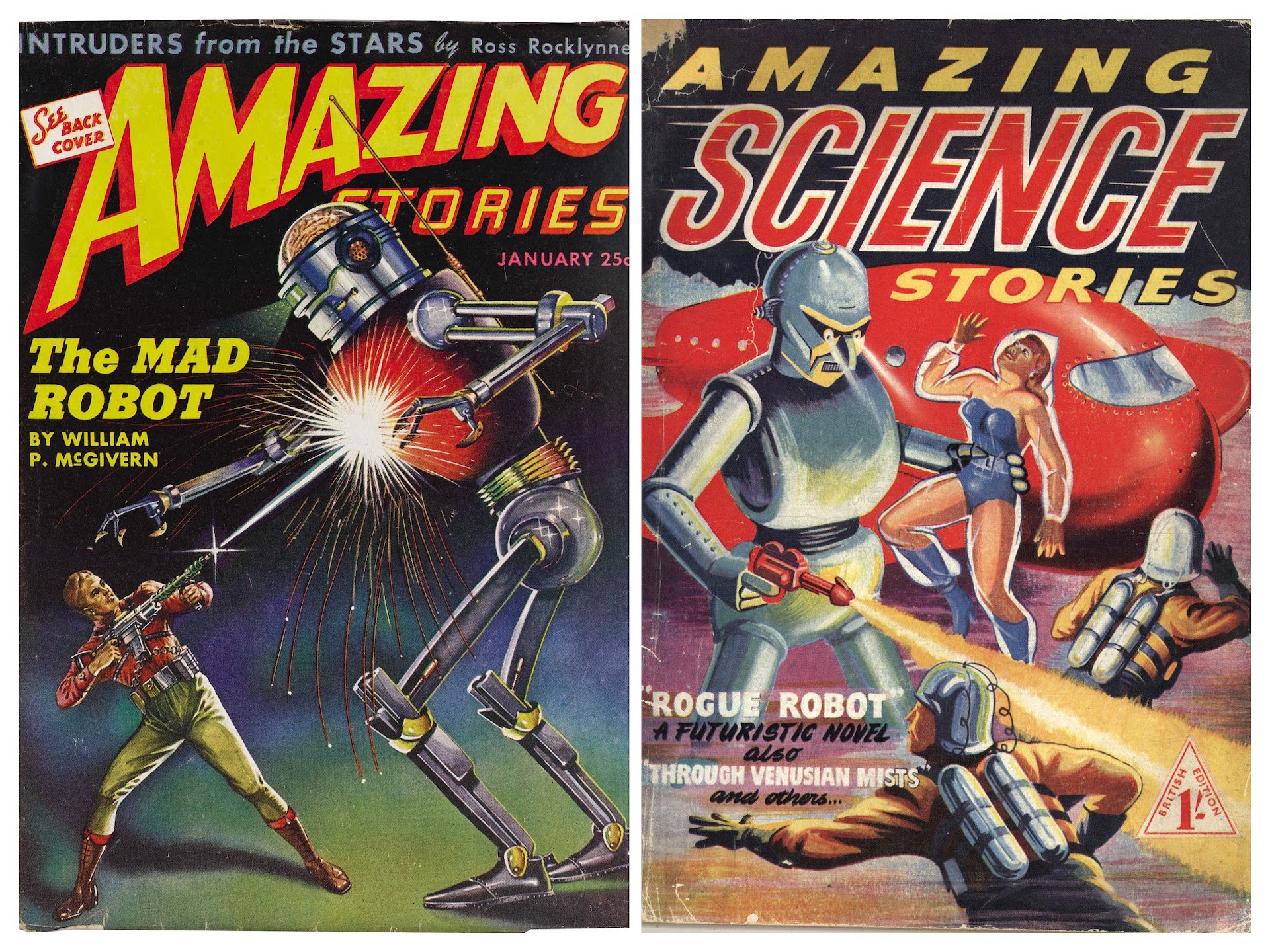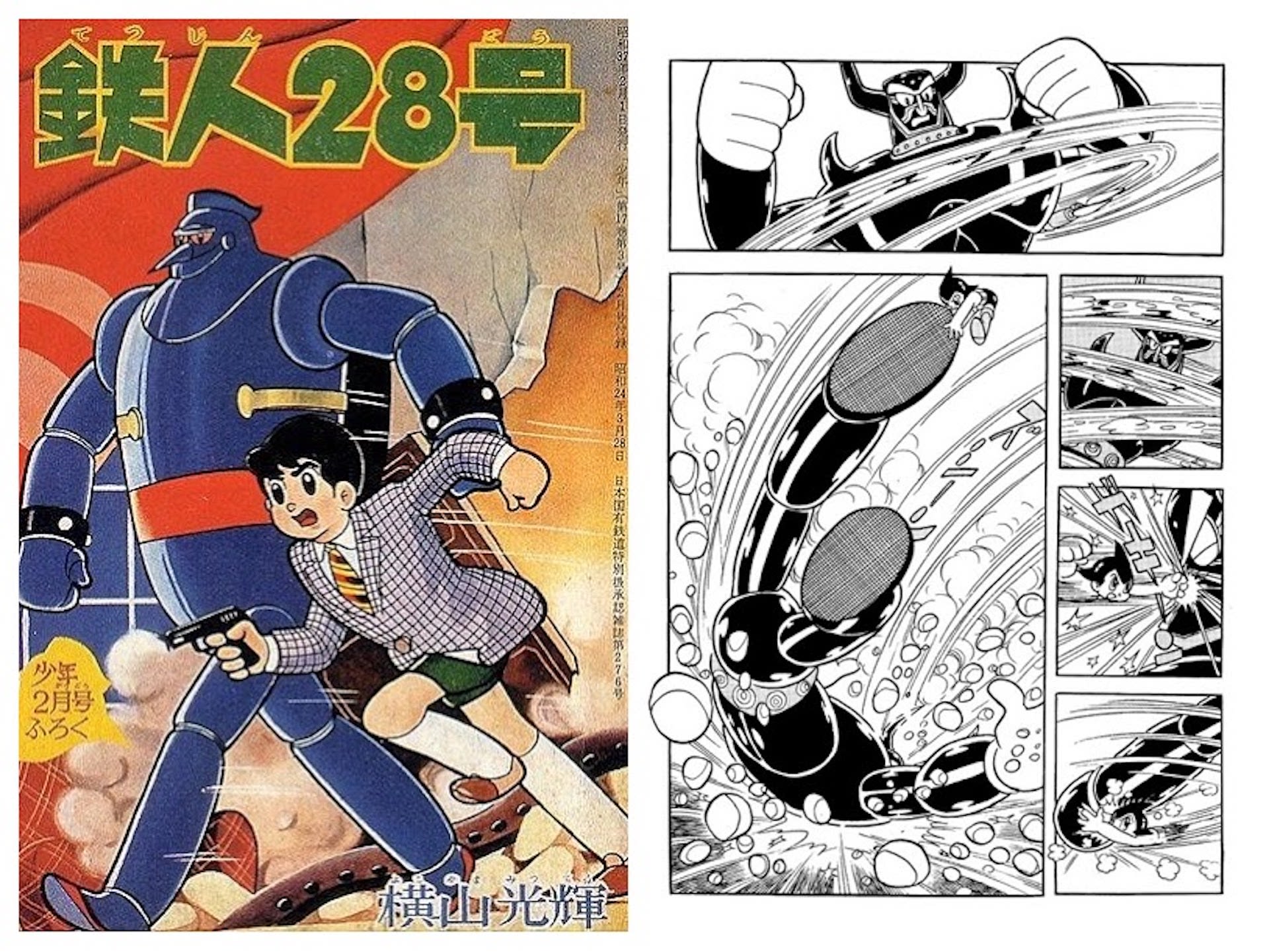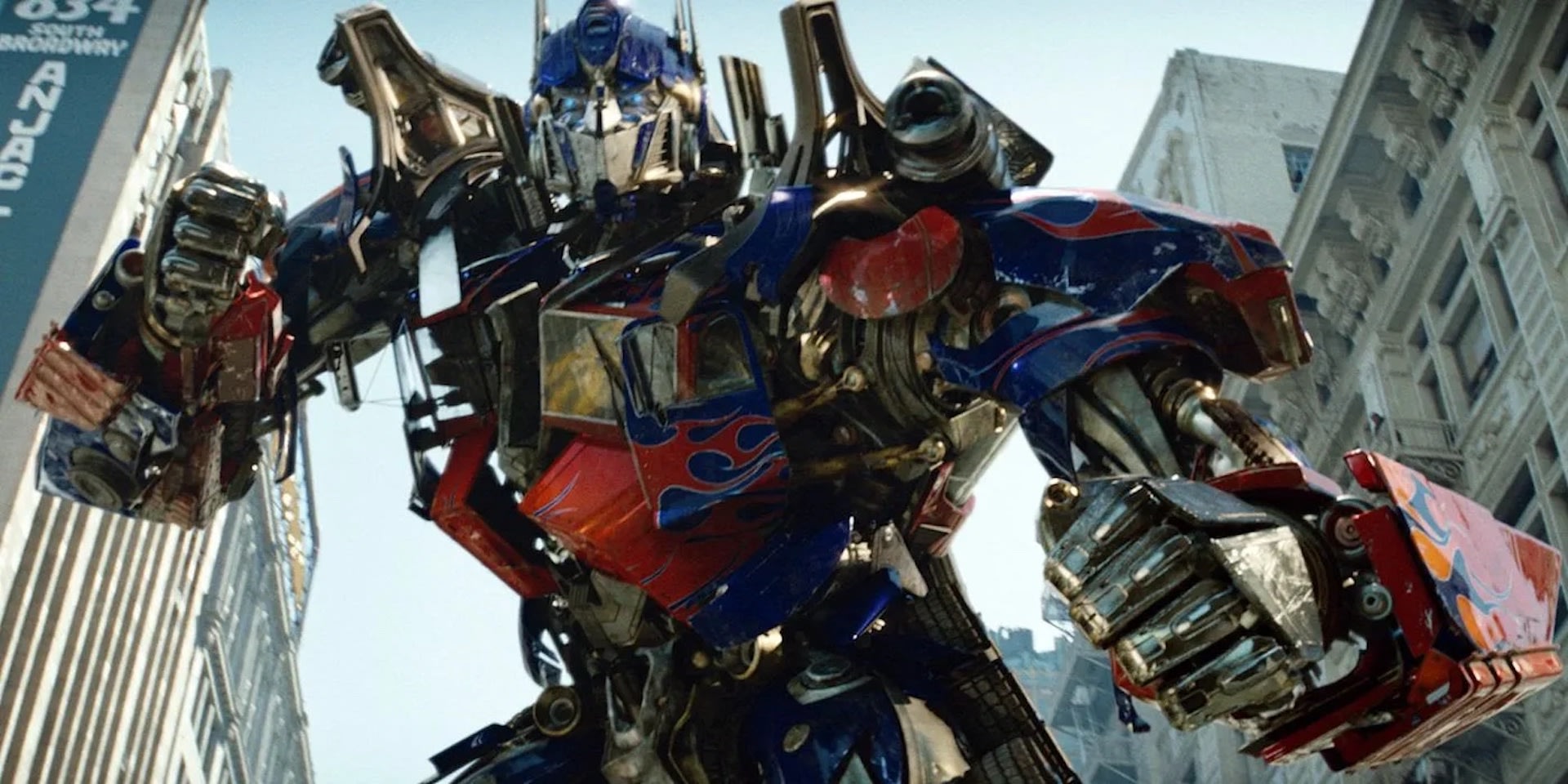
article
Mecha! Mecha!
Where do these super robots suddenly come from?
Arjan Terpstra
09 Sep 2022 ⋅ 7 min read
They're in Pacific Rim and Transformers movies on the silver screen, and in countless animation series and comic books. You play them in games (TitanFall, Metal Gear Solid), and find them as Lego sets (Lightyear's Emperor Zurg, Transformers) or Gunpla model kits. Huge, awe-inspiring and weapon-wielding robots are seemingly everywhere in pop culture, and there is no indication their popularity will decline any time soon.
What's up with these monster machines? "Mecha" takes up a large space in our collective imagination, sitting in a sweet spot where a lucid futurism meets power fantasies. Look at any Mobile Suit Gundam or Transformers animation or comic, and you see a glorification of both construction technology, of military prowess, and of scientific advancement, ticking all the boxes of boys' interests of any age group, and of any gender. In this sense, the Gundam, Voltron, Evangelion, Mighty Morphin Power Rangers, Metal Gear REX, and Transformer robots we like so much, are a metallic embodiment of deep, innate human power fantasies.
But while this may explain the mecha appeal, it doesn't explain the sudden surge in metallic monsters in our global media diet. Because fantasies about giant robots and automatons are nothing new for pop culture. The classic sci-fi novel War of the Worlds dates back to 1897, to name but one example, and it gave us large robotic "tripods" the aliens use to hunt down humans. The pulp fiction of the 1940s and 50s also picked up on the theme of large "rogue robots," as did early sci-fi television, and did so with abandon.
Metallic monsters
But while this may explain the mecha appeal, it doesn't explain the sudden surge in metallic monsters in our global media diet. Because fantasies about giant robots and automatons are nothing new for pop culture. The classic sci-fi novel War of the Worlds dates back to 1897, to name but one example, and it gave us large robotic "tripods" the aliens use to hunt down humans. The pulp fiction of the 1940s and 50s also picked up on the theme of large "rogue robots," as did early sci-fi television, and did so with abandon.
But these are not mecha as we know them today. For starters, they mostly were the scary adversaries of the stories' protagonists, no different from the zombies and aliens other pulp titles offered. As such, they are more an embodiment of our fears (of the unknown, of aliens from space) than an embodiment of our need to have agency, like when humans pilot a Jaeger in Pacific Rim. And when the pulp fiction robots are friendly, they're clearly robots in the way R2D2 is a robot: programmed cans of wires, capable to run errands and provide the occasional comic relief, but not much more.
To truly understand the current breed of large and powerful robots, we have to first look at the country responsible for the mecha surge: Japan. Pop-culture historians trace the first "mecha" robots back to WWII, when manga artists drew huge militarized robots stomping Western cities in propaganda images. Yet at the end of the war, Japan had to acknowledge a bitter reversal of the cartoons: the US military had clearly stomped the cities of Japan, with Hiroshima and Nagasaki on the receiving end of the United States' advances in science and technology.
Japanese roots
To truly understand the current breed of large and powerful robots, we have to first look at the country responsible for the mecha surge: Japan. Pop-culture historians trace the first "mecha" robots back to WWII, when manga artists drew huge militarized robots stomping Western cities in propaganda images. Yet at the end of the war, Japan had to acknowledge a bitter reversal of the cartoons: the US military had clearly stomped the cities of Japan, with Hiroshima and Nagasaki on the receiving end of the United States' advances in science and technology.
The fallout of the war and its aftermath would burn into the Japanese psyche, and leave its mark on Japanese creatives, too. Osamu Tezuka, the "father of manga," created Astro Boy/Mighty Atom in 1952, a story of a boy brought back to life as a superpowered robot by a scientist-father. The comic dissed out strong themes like grief, and gave its readers science and technology as powers to defeat all evil. Mitsuteru Yokoyama created a similar story with Tetsujin 28-go (known as Gigantor in the West, 1956), in which a boy inherits a remote-controlled, giant robot from his late scientist father.
After this influential post-war start, a new robot craze caught on in the sixties and seventies. "Big robot fights" rapidly grew into a manga and anime staple, with the word "big" related to both the lengthy fighting, as to the size of the robots. This trend carried over to televised shows like Ultraman (1966) or Kamen Rider (1971) too, shows in which the (super)heroes fought an array of alien or robot monsters. Even the biggest names in Japanese entertainment could not escape the trend: in 1974, a new Godzilla/Gojira film honored the big robot fashion when the atomic heat-beam spewing lizard fought a mecha döppelganger in Godzilla vs. Mechagodzilla.
Big robot fights
After this influential post-war start, a new robot craze caught on in the sixties and seventies. "Big robot fights" rapidly grew into a manga and anime staple, with the word "big" related to both the lengthy fighting, as to the size of the robots. This trend carried over to televised shows like Ultraman (1966) or Kamen Rider (1971) too, shows in which the (super)heroes fought an array of alien or robot monsters. Even the biggest names in Japanese entertainment could not escape the trend: in 1974, a new Godzilla/Gojira film honored the big robot fashion when the atomic heat-beam spewing lizard fought a mecha döppelganger in Godzilla vs. Mechagodzilla.
An important addition to the super robot trend came from the manga Mazinger Z, made by the influential manga artist Kiyoshi ("Go") Nagai in 1972. On the surface his new title was yet another futuristic comic about a giant fighter robot. Only this time, the robot was piloted by a human from the inside, and not remote-controlled like Gigantor was. This would soon be a defining trait of the genre, as more piloted mecha made their appearance, with Mobile Suit Gundam (the first anime series aired in Japan in 1979) galvanizing the trend.
The next big step for mecha came in the early 1980s, when the mecha trend first crossed the Pacific and swept into the US and beyond. To understand why that happened, and why it happened at that time, we have to look at the US government's actions towards children's television. Before 1982, the Federal Communications Commission blocked toymakers from promoting their wares through televised content. But in that year, Ronald Reagan's administration altered the regulation playbook, essentially opening up children's television broadcasting for commercial exploitation.
Moving West
The next big step for mecha came in the early 1980s, when the mecha trend first crossed the Pacific and swept into the US and beyond. To understand why that happened, and why it happened at that time, we have to look at the US government's actions towards children's television. Before 1982, the Federal Communications Commission blocked toymakers from promoting their wares through televised content. But in that year, Ronald Reagan's administration altered the regulation playbook, essentially opening up children's television broadcasting for commercial exploitation.
Toy makers did not hesitate, and scrambled to find content to push products to American kids. And since Western studios needed time to adapt to the new reality, Japanese animation studios (known for their quick lead times) suddenly found themselves in high demand. Soon they delivered both new animation series (G.I. Joe being the first Japanese production based on a US toy line), and off-the-shelve series that had never aired in the US but could potentially be used to promote toys.
This seachange in regulation laws led to the start of one of the most mecha of all mecha animation series: The Transformers. This huge entertainment property started life as a Japanese toy line of shape-shifting robots called Diaclone Car Robots, made by Takara Toys from 1980 onwards. US toy company Hasbro licensed the toys, using the actual Japanese molds for the first 28 toy models. At the same time it asked Japanese studio Toei Animation to produce a television series based on an eight-page treatment penned by Marvel Comics Editor-in-Chief Jim Shooter. The Transformers (1984), ran for four years, spawning ninety-eight episodes and a feature film.
Transformers would quickly capture the hearts and minds of young Americans, who were mostly unaware of the Japanese pedigree of the toys' designs and overall aesthetic. Occasionally someone would wonder why an Autobot had a tiny seat on its arm, while the television show clearly proved the Transformers were sentient beings, who needed no human assistance to function. Little did they know the original toy molds had been part of a "micro-man" toy line in Japan—the Japanese designers clearly had piloted mecha in mind when they designed the shape-shifting robots.
This seachange in regulation laws led to the start of one of the most mecha of all mecha animation series: The Transformers. This huge entertainment property started life as a Japanese toy line of shape-shifting robots called Diaclone Car Robots, made by Takara Toys from 1980 onwards. US toy company Hasbro licensed the toys, using the actual Japanese molds for the first 28 toy models. At the same time it asked Japanese studio Toei Animation to produce a television series based on an eight-page treatment penned by Marvel Comics Editor-in-Chief Jim Shooter. The Transformers (1984), ran for four years, spawning ninety-eight episodes and a feature film.
More than meets the eye
Transformers would quickly capture the hearts and minds of young Americans, who were mostly unaware of the Japanese pedigree of the toys' designs and overall aesthetic. Occasionally someone would wonder why an Autobot had a tiny seat on its arm, while the television show clearly proved the Transformers were sentient beings, who needed no human assistance to function. Little did they know the original toy molds had been part of a "micro-man" toy line in Japan—the Japanese designers clearly had piloted mecha in mind when they designed the shape-shifting robots.
Soon Transformers were huge in the United States, with both the television show and the toys in high demand. Apart from popularizing mecha design, it also did something else: it helped whet the appetites of Americans for Japanese design in general. Prior to 1980, Japan looked to the US for design inspiration. The success of Transformers, but also of games like Space Invaders and PAC-MAN (that had its own television series) meant a reversal took place in which the American market opened more to accept Japanese designs and design sensibilities.
Fast forward to today, and you see the impact of this reversal everywhere in Western media: the visual traditions of manga, anime and Japanese games have successfully made the jump to US and other nations' media, growing more popular by the day. Hello Kitty is on par with Barbie in terms of global recognition, PAC-MAN, Super Mario and Sonic the Hedgehog are very much top of mind with kids today. Meanwhile Netflix stocks up on Japanese anime, and runs now-classic mecha anime like Neon Genesis Evangelion, Full Metal Alchemist and Mobile Suit Gundam series. Also movie theaters prepare for a new robotic onslaught: Transformers 7: Rise Of The Beasts is slated for 2023.
Looking at this smorgasbord of available mecha in Western media, Japanese or other, one thing is clear: mecha will keep stomping our cities for some time to come.
Hello Kitty
Fast forward to today, and you see the impact of this reversal everywhere in Western media: the visual traditions of manga, anime and Japanese games have successfully made the jump to US and other nations' media, growing more popular by the day. Hello Kitty is on par with Barbie in terms of global recognition, PAC-MAN, Super Mario and Sonic the Hedgehog are very much top of mind with kids today. Meanwhile Netflix stocks up on Japanese anime, and runs now-classic mecha anime like Neon Genesis Evangelion, Full Metal Alchemist and Mobile Suit Gundam series. Also movie theaters prepare for a new robotic onslaught: Transformers 7: Rise Of The Beasts is slated for 2023.
Looking at this smorgasbord of available mecha in Western media, Japanese or other, one thing is clear: mecha will keep stomping our cities for some time to come.





